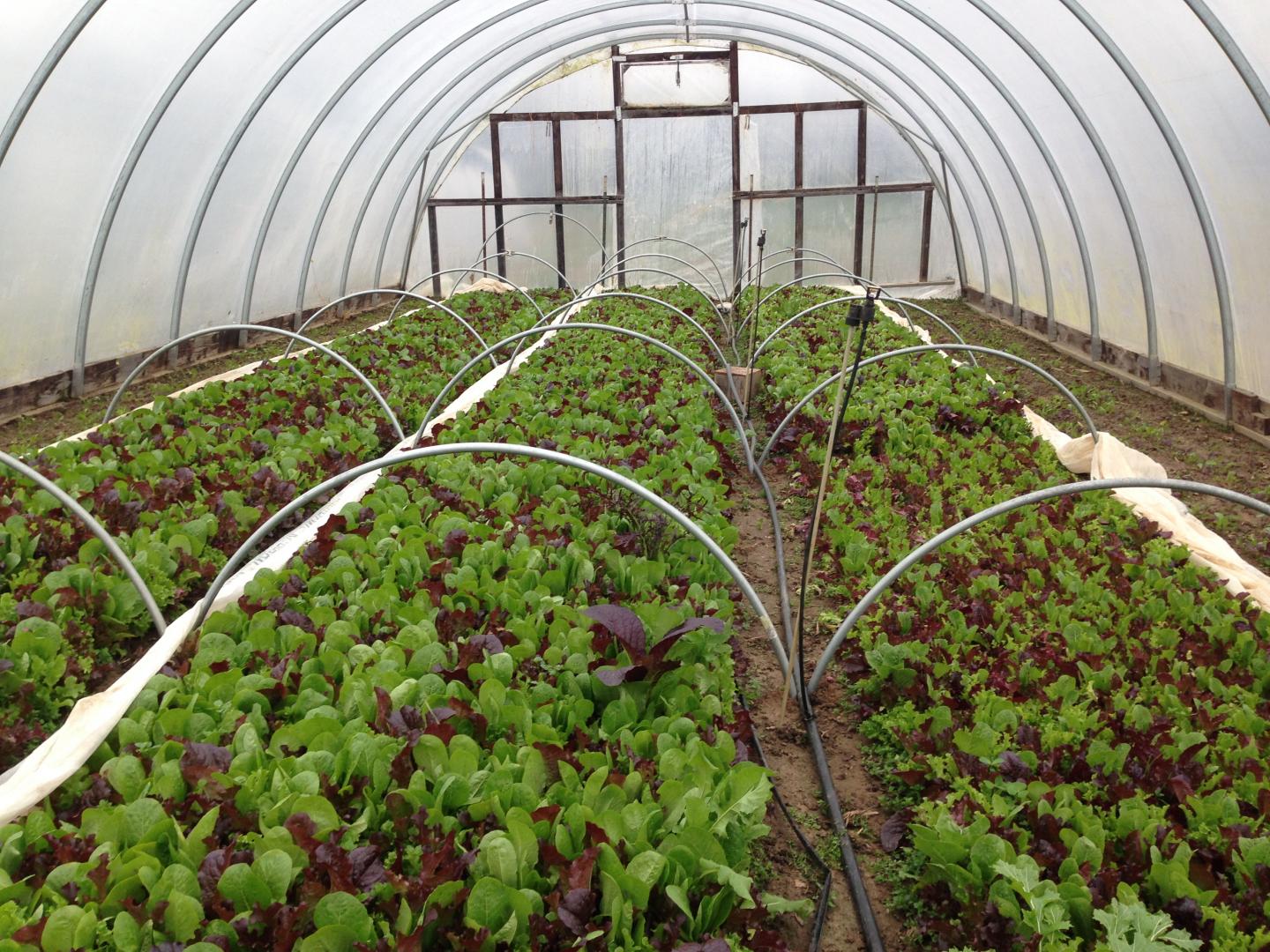Study gains a better understanding, from the perspective of farmers, of the challenges and advantageous opportunities associated with using high tunnels for specialty crops

Credit: Full Hand Farm
A study out of Indiana and Purdue Universities sought to gain a better understanding, from the perspective of farmers, of the challenges and advantageous opportunities associated with using high tunnels for specialty crops in Indiana.
Analena Bruce (Indiana University), Elizabeth Maynard (Purdue University), and James Farmer (Indiana University) researched the application of this season-expanding growing technique in order to provide an in-depth understanding of farm-level challenges associated with high tunnel adoption and usage. Their results are detailed in the article, “Farmers’ Perspectives on Challenges and Opportunities Associated with Using High Tunnels for Specialty Crops,” published in HortTechnology.
High tunnels are essentially unheated greenhouses that can help farmers extend the growing season so that they can improve profitability and productivity of their farms. They provide protection from extreme weather such as high winds, heavy rain, hail, snow and drought.
Unlike greenhouses, high tunnels are simple structures over bare ground and its natural soil. They function without elaborate heating or cooling systems and are generally basic frames set into the ground and covered with one or two layers of greenhouse-grade plastic.
High tunnels are an increasingly popular part of the infrastructure among small and diversified farms that market their products directly to consumers. In addition to extending the growing season, research has strongly indicated that high tunnels can increase yield, enhance shelf life, and improve the quality of crops grown.
Initial observations into the use of high tunnels revealed that the additional labor and time requirements of high tunnel production, the increased complexity of transforming farming habits to high tunnel usage, soil fertility and management considerations, disease management, and limited winter markets all comprise the greatest challenges facing farmers adopting this technique.
The ability to differentiate their products based on higher quality and longer shelf life, the ability to obtain a premium price, the ability to maintain a source of income during the off-season, and the ability to produce complementary crops have been revealed as the most attractive advantageous opportunities for using high tunnels in farming.
The global production of specialty crops, such as high-value vegetables, has been transformed by the use of high tunnels to temper the effects of extreme weather events and climate conditions, and allow for extended growing seasons.
This study presents findings from qualitative research that was designed as a follow-up to a survey of farmers using high tunnels across Indiana. A qualitative approach was ideal for this study because it provided a richer picture of farmers’ experiences with high tunnels and a better understanding of the specific challenges and opportunities alluded to earlier.
One of the more commonly mentioned challenges described by participating farmers was the added difficulty with keeping up with the time and labor required to manage their high tunnels. The researchers determined that one reason why high tunnel crops are more labor-intensive for farmers is because high tunnel planting and harvesting schedules are substantially different from what farmers are familiar with and require schedules that are separate from those of their vegetable crops growing in the uncovered portions of their fields.
The article showcases in-depth interviews for this effort that allow for the reporting of specific examples that illustrate the experiences of farmers with high tunnels. These specific examples prove to be very valuable for developing an understanding of the issues and how they can be addressed in the best way. Furthermore, these examples combined with the results of surveys and quantitative research will enable more rapid improvements in high tunnel production systems through research, improvements in technology, and education.
###
The complete article is available on the ASHS HortTechnology electronic journal web site: https:/
Founded in 1903, the American Society for Horticultural Science (ASHS) is the largest organization dedicated to advancing all facets of horticulture research, education, and application. More information at ashs.org.
Media Contact
Michael Neff
[email protected]
Related Journal Article
http://dx.




